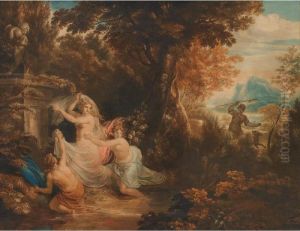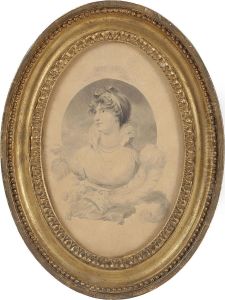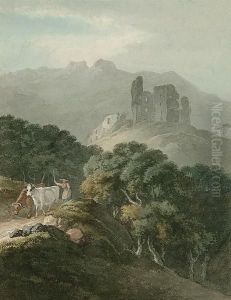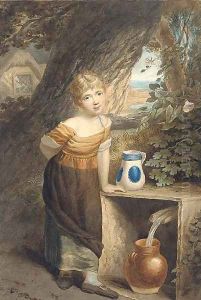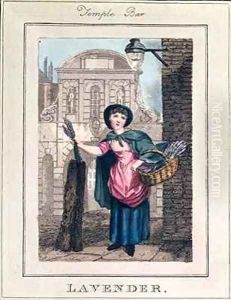William Marshall Craig Paintings
William Marshall Craig was a British artist, illustrator, and watercolorist known primarily for his works as a portrait and subject painter. His exact birth date is not well documented, but he is believed to have been born around 1765. Little is known about Craig's early life and training, but he was active as an artist from the late 18th century into the early 19th century.
Craig's work included a wide range of subjects, from portraiture to historical scenes, and he was particularly noted for his skills in watercolor. In the early 19th century, he was appointed as Painter in Water Colours in Ordinary to Queen Charlotte, wife of King George III. This royal patronage was an acknowledgment of his artistic talents and helped to elevate his status as an artist.
Throughout his career, Craig contributed to the illustration of books and periodicals, which was a common practice for artists during this time to supplement their income. He illustrated works such as 'A Collection of Poems in Six Volumes' by several hands (published by John Bell, 1782), and provided images for 'The Poetical Works of John Milton' (1809). His illustrations were often engraved and published in the popular literary annuals of the time.
Craig was also known for his 'Itinerant Traders of London in their Ordinary Costume' with descriptions, a series of 31 etchings that he made in 1804 illustrating the street vendors of London. These images provide valuable insights into the life and social history of the city during that period.
Despite his accomplishments, William Marshall Craig's life is not well-documented, and many aspects of his biography remain obscure. There is also some confusion with another contemporary artist, Francis William Craig, which sometimes leads to misattribution of works. William Marshall Craig is believed to have died around 1827, though the exact circumstances of his death are not recorded.

